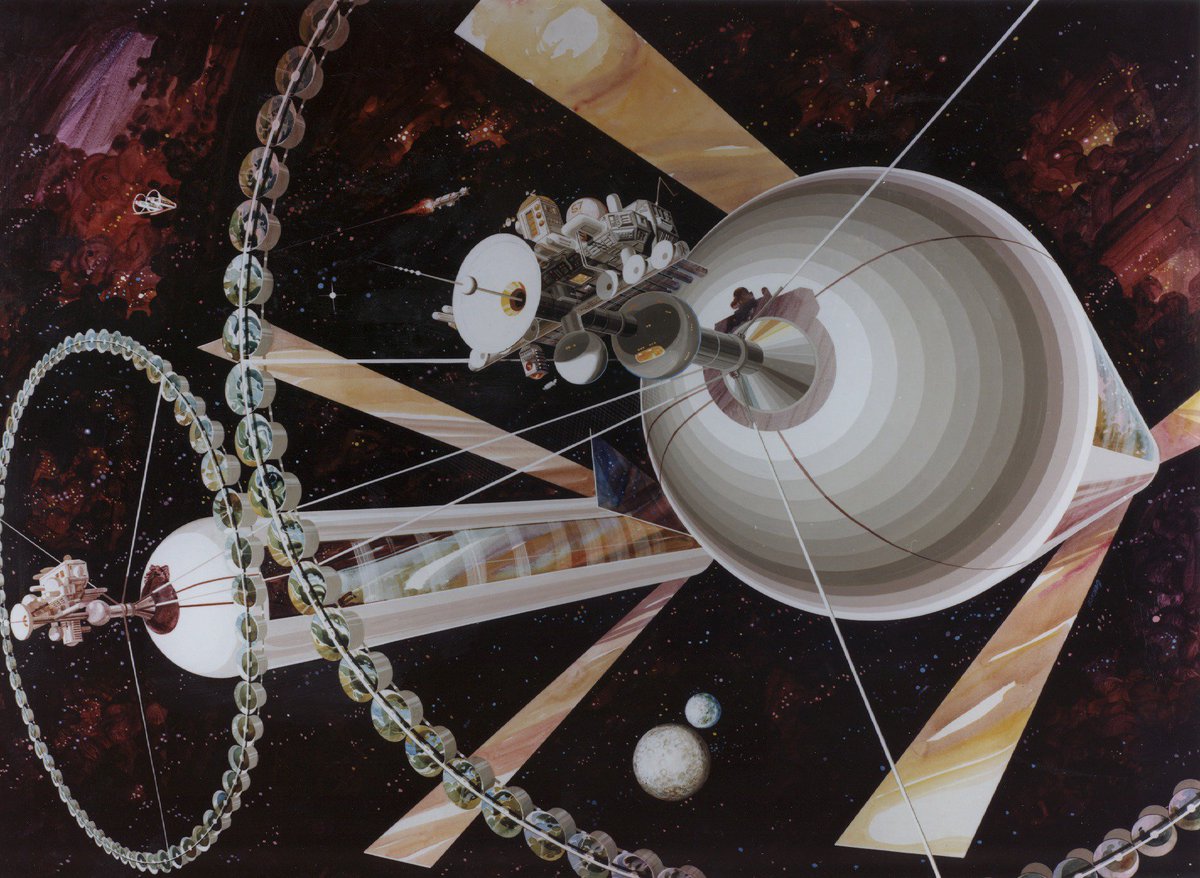daydreams of a space faring future

Imagine living in a giant tube big enough to contain 10,000 people and everything they ever need. There’s no wind save for the gentle breeze of the air conditioning and life support systems pumping fresh air into areas where humans live, work and play. Outside every window is a view literally out of this world and if you were up for adventure, you could cruse back and forth around the solar system with plasma rockets or solar sails. Ok, so the solar system cruise is my addition but the idea for enormous space colonies is a conceptual project from the NASA Ames Research Center illustrated in the late 1970s and seems as fantastic today as it did more then thirty years ago. But just think about it for a minute. What would it be like to live among the stars?
At first glance we might think that nothing would really change. We would still be going to work and coming to our homes and families at the end of our shift. We would still have bad bosses, daydream about things and generally fall into the same kind of humdrum routine we have right here on our own planet. However, I’m not so sure that would be the case. After all, people living on such colonies would essentially be a crew which is barreling through space at very high speeds and has the opportunities to do the kind of science and research we could only dream about today. And very importantly, they would be cut off from Earth. Wars, market woes, trade agreements and other turmoil hundreds of millions of miles away much of the time and running at least half an hour behind real time, would have very diminished effects on the daily life of the occupants.
Colonies meant to support some 10,000 people in the vacuum of space would need to be as self-sustaining as possible for practical and logistical reasons since to leave them dependent on supply trips from Earth is a terrible waste of money and resources. The result would be a completely isolated ecosystem with its unique politics, economics and social hierarchies. Traveling around the solar system would also have very profound effects on the culture, religion and priorities of the societies inhabiting this artificial microcosm. Astronauts in orbit just a few hundred miles above our heads sometimes say they got a much greater appreciation of how unique and fragile our world is. What would an entire society think after roaming the solar system and seeing what either no human before them, or just a handful of explorers saw firsthand?
Finally, what happens when this society grows? Let’s keep in mind that 10,000 individuals is what one would call a stable breeding population. It’s diverse enough to maintain genetic variety, avoid inbreeding and maybe even start a new species as enough physiological changes in space faring humans would accumulate and cause genetic drift. There’s no way you can put men and women in a confined space for many years and not expect that they’ll continue doing what they normally do on Earth. With doctors and scientists right there, most of the tools to support newborns and help them grow and mature at their disposal, a massive human colony will inevitably grow and expand. In a sense, it would almost be like starting a new civilization which could pose some political concerns back home. Would these colonies be treated as sovereign nations or would they still be subjects of their distant homelands? And would they ever arm themselves because they’re going deep into the unknown where almost anything could happen at any moment?
Of course the most important part of the entire concept is why would we want to build these giant colonies in the first place and what we’d hope to accomplish with them? Would we build them just show that we can build them? According to an article by Dwayne Day for The Space Review, that’s unlikely to be enough to capture the imaginations of the people who would be pivotal in making a space faring future happen. And as much as I’d like to see people freely roaming space within my lifetime for any reason, I have to agree with his point.





